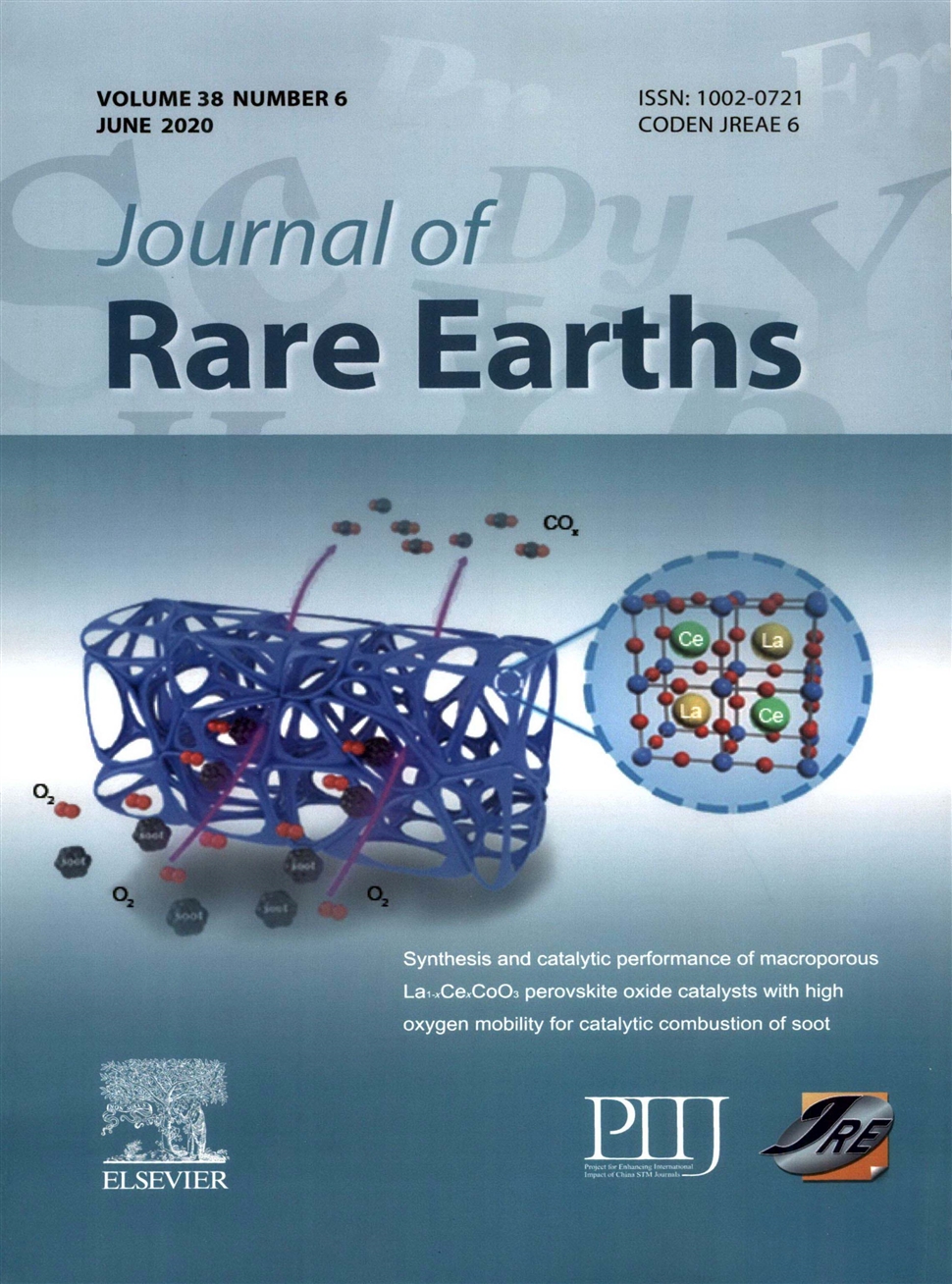Low-temperature thermocatalytic particulate carbon decomposition via urea solution-combustion derived CeO2 nanostructures
作者:S.P.Ratnayake,M.M.M.G.P.G.Mantilaka,C.Sandaruwan,D.Dahanayake,Y.Pivini Gunasekara,S.Jeyasakthy,N.M.Gurusinghe,U.K.Wanninayake,K.M.Nalin de Silva
摘要:A facile,one-pot,urea solution combustion route was utilized to synthesize highly catalytic CeO2 nanostructures.CeO2 prepared under varying thermal conditions was characterized by electron microscopy,energy dispersive X-ray spectroscopy,X-ray diffraction,X-ray photoelectron spectroscopy,infrared and Raman techniques.As the synthesis temperature is raised from 400 to 1000℃,the crystallite size and dspacing of nanoparticles are observed to reduce while cell parameters remain in the same range.Particle size exhibits an accession from~20 to~50 nm along the process.Initial CeO2 nanoparticles are detected as a composite structure of CeO2 and graphitic carbon nitride(g-C3 N4)produced by the pyrolysis of urea.Concerning the solid carbon particulate oxidation capacity,an outstanding performance is exhibited by CeO2 synthesized at 800℃where the oxidation onset temperature is reduced by 27%compared with the others.The superior performance is attributed to the carbon nitride-generated unique CeO2 nanomorphology consolidating ample reactive sites and facilitated oxygen delivery for a highly efficient thermocatalytic process.Concerning atmospheric pollution mitigation,synthesis of these CeO2 nanostructures represents a cost effective and convenient abatement technique for carbon particulates in comparison to cost-intensive,environmentally detrimental and noble-metal based techniques.
发文机构:Sri Lanka Institute of Nanotechnology School of Science Postgraduate Institute of Science Centre for Advanced Materials and Devices(CAMD)
关键词:CERIANanoparticlesSOOTSolutioncombustionGraphiticcarbonnitrideRareearths
分类号: X701[环境科学与工程—环境工程]O643.36[理学—物理化学]
- Magnetic properties enhancement of hot-deformed NdFeB magnets by two different methods of CeNdCu diffusion
- Recent advances on rare earths in solid lithium ion conductors
- Enhanced hydrogen storage performance of Mg-Cu-Ni system catalyzed by CeO2 additive
- A downshifting Eu^3+doped glass embedded with concave pyramid microstructure to improve the efficiency of silicon solar cell
- A two-parameter model for ion exchange process of ion-adsorption type rare earth ores
- Effect of tungsten oxide on ceria nanorods to support copper species as CO oxidation catalysts
- Comparative study of La(1-x)CexMnO(3+δ) perovskites and Mn-Ce mixed oxides for NO catalytic oxidation
- Effective rare earth extraction from Nd-Fe-B waste by liquid cuprum extraction method
- Effect of calcination temperature on steam reforming activity of Ni-based pyrochlore catalysts
- Tunable luminescence in co-doped Zn3Al2Ge2O10:Cr3+by controlling crystal field splitting and nephelauxetic effect


